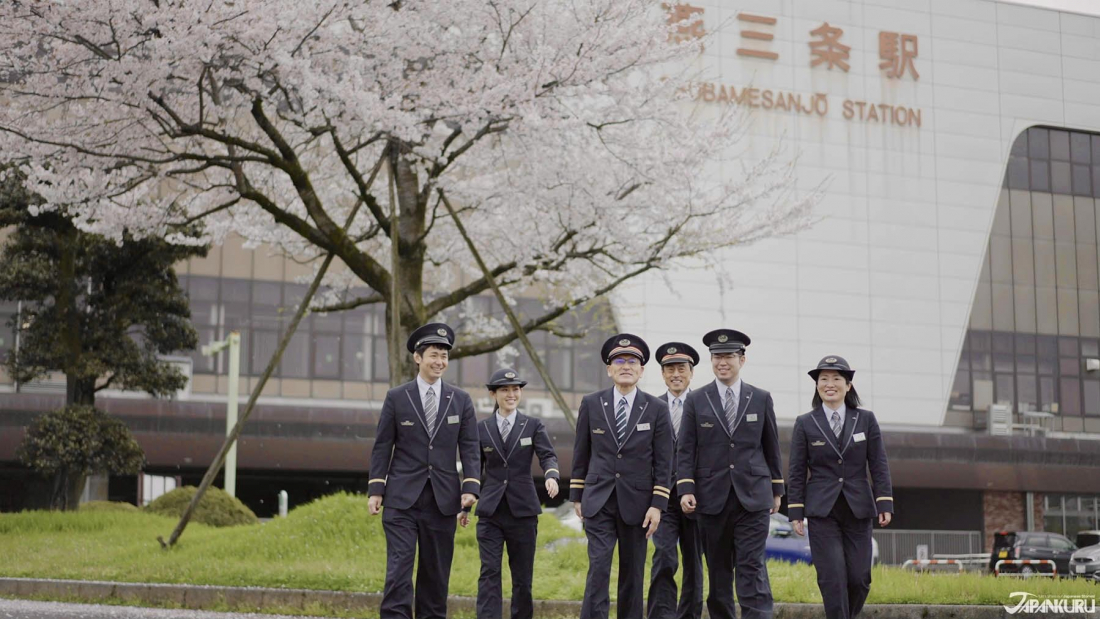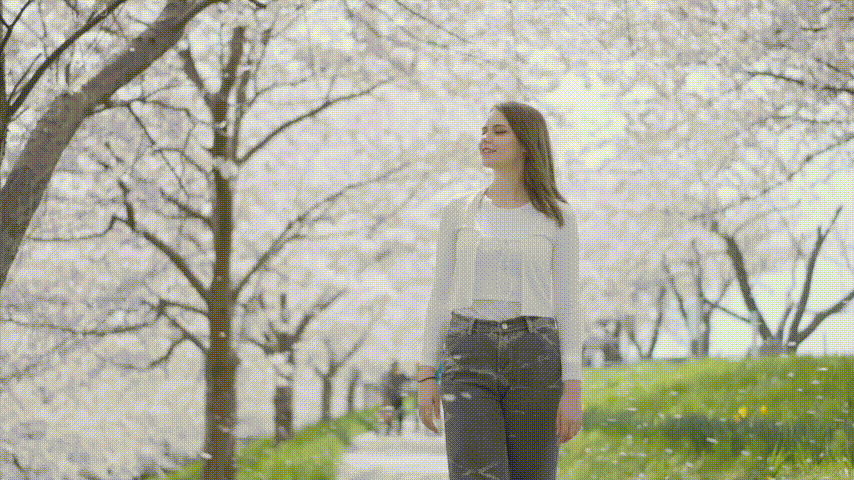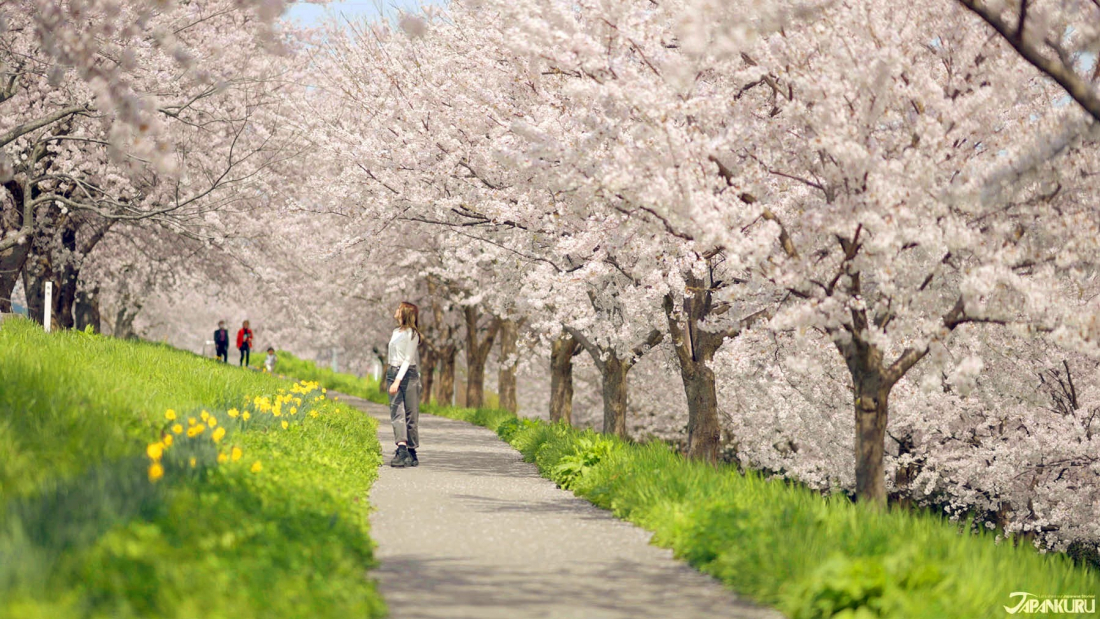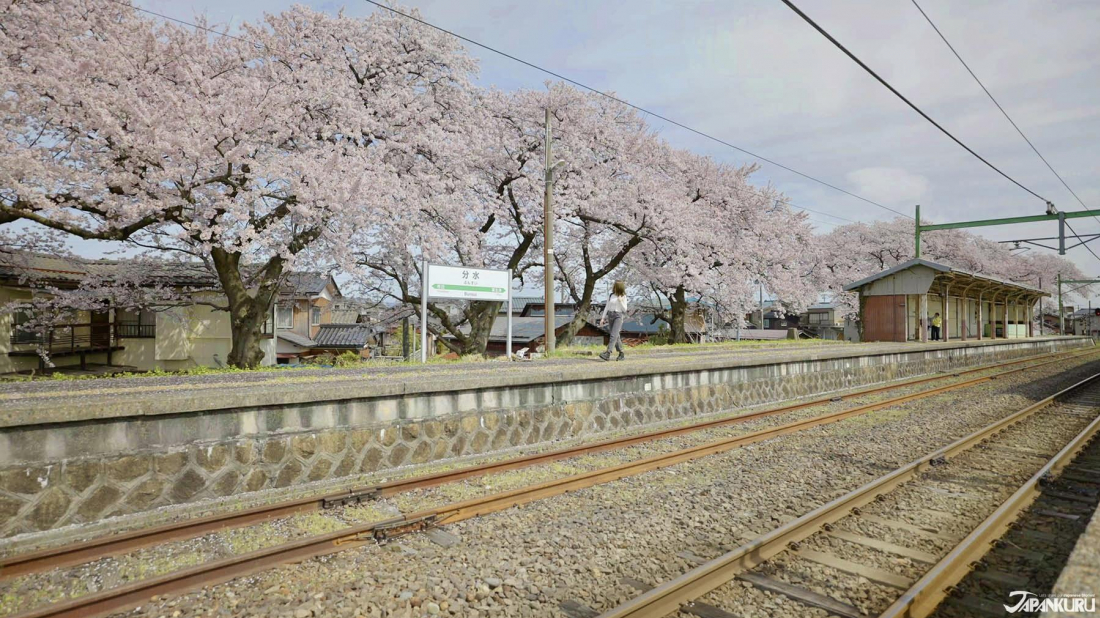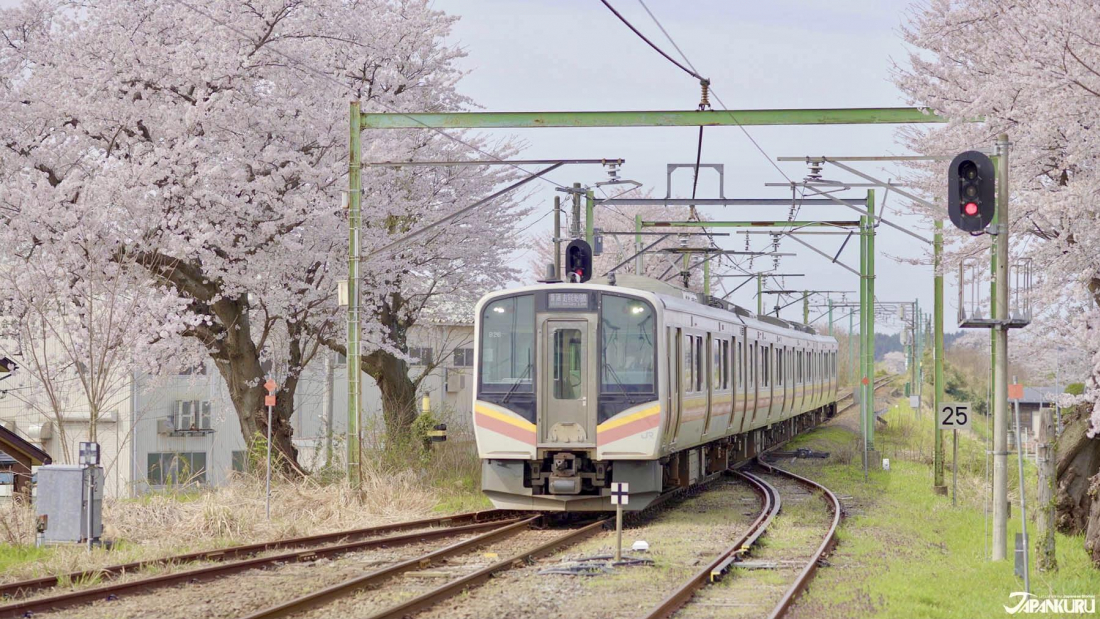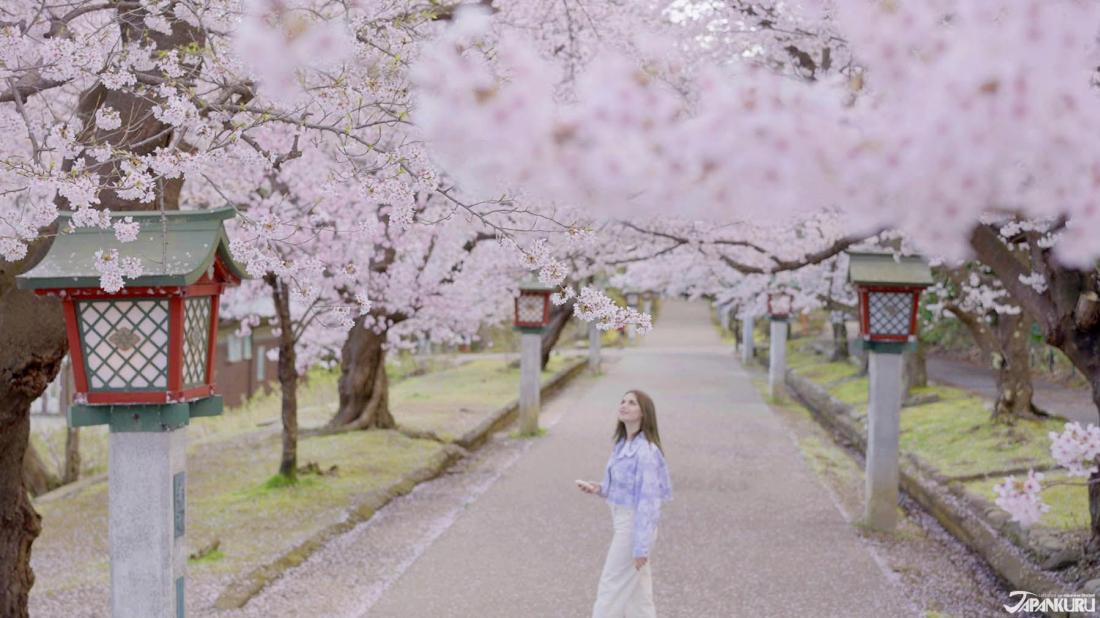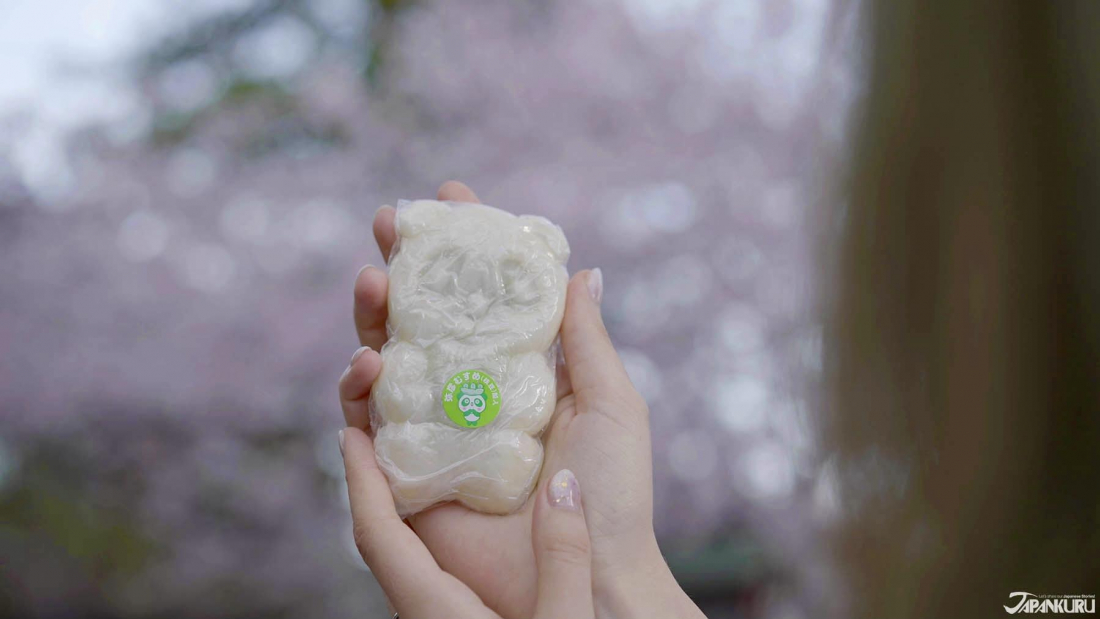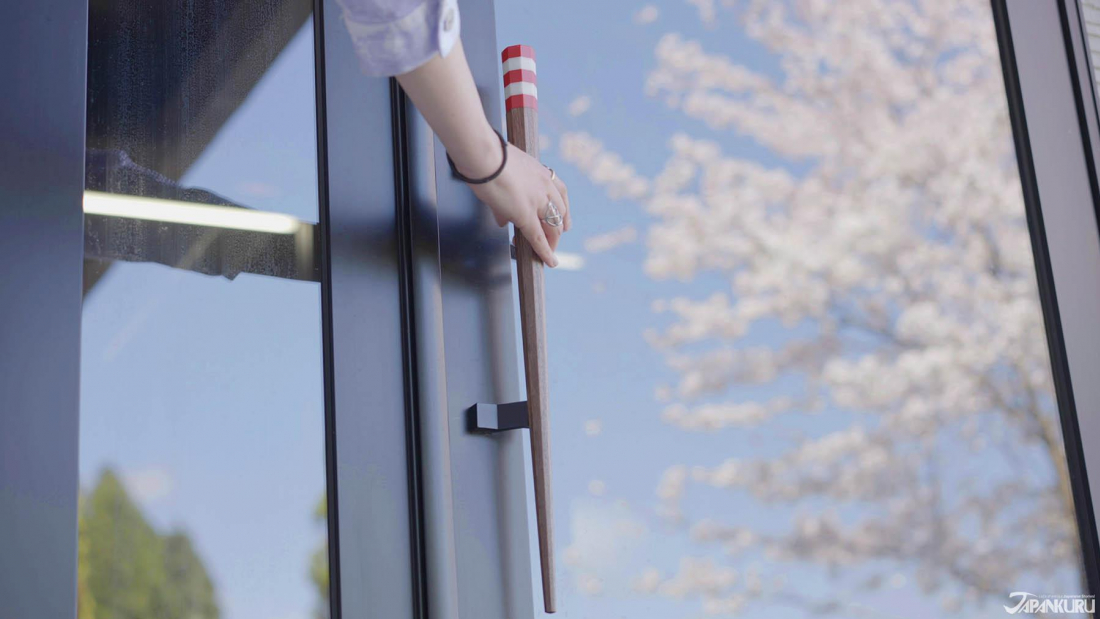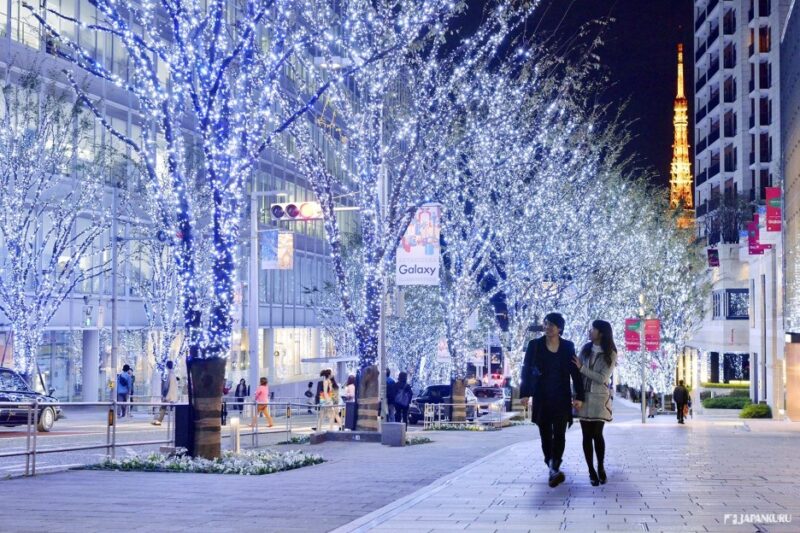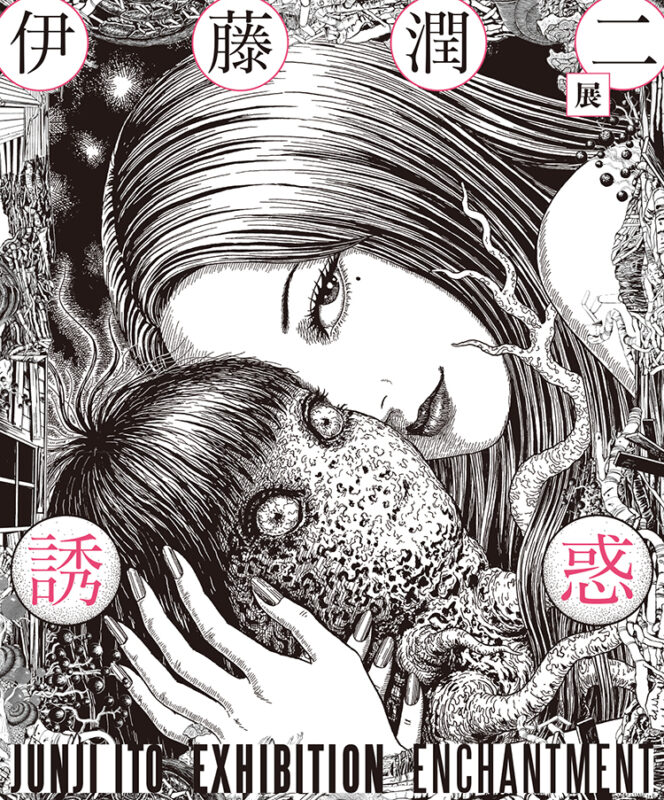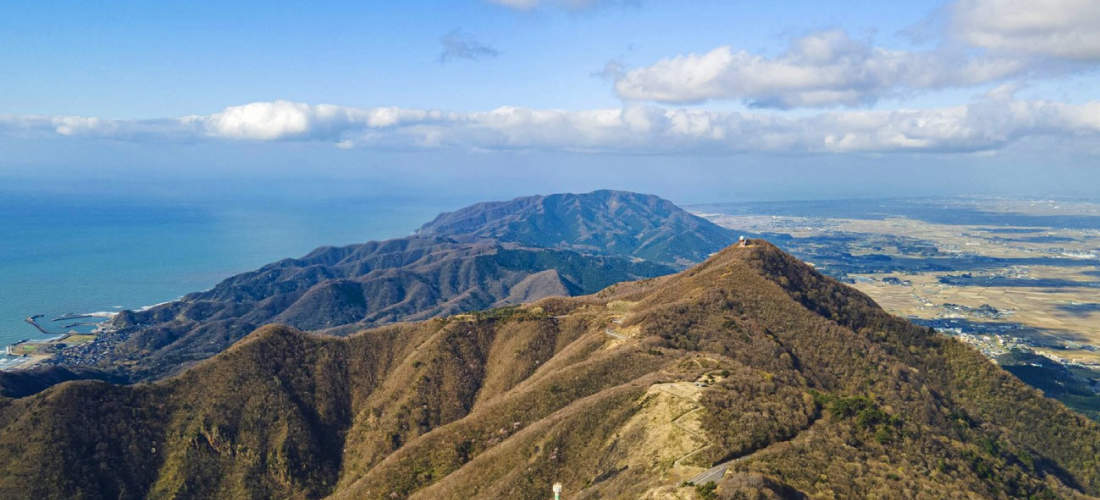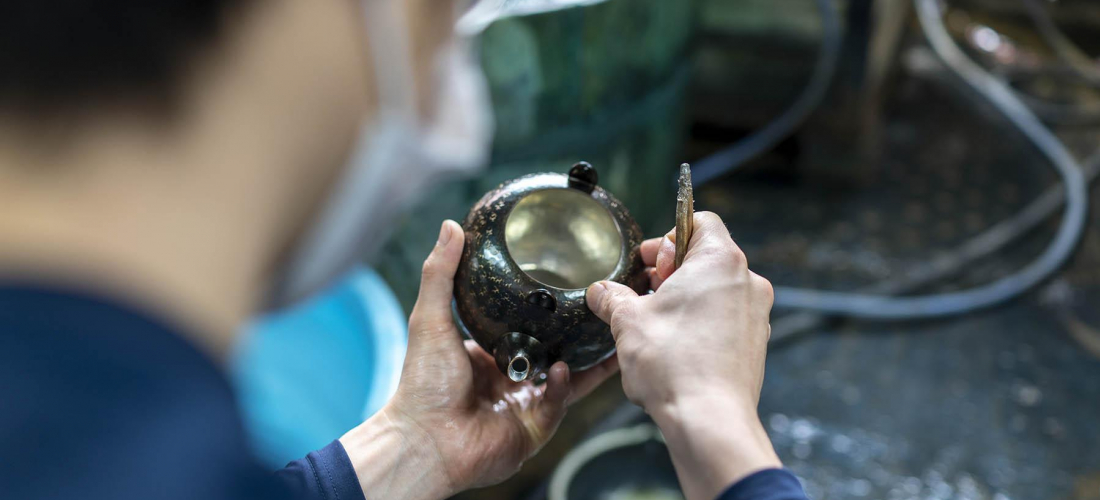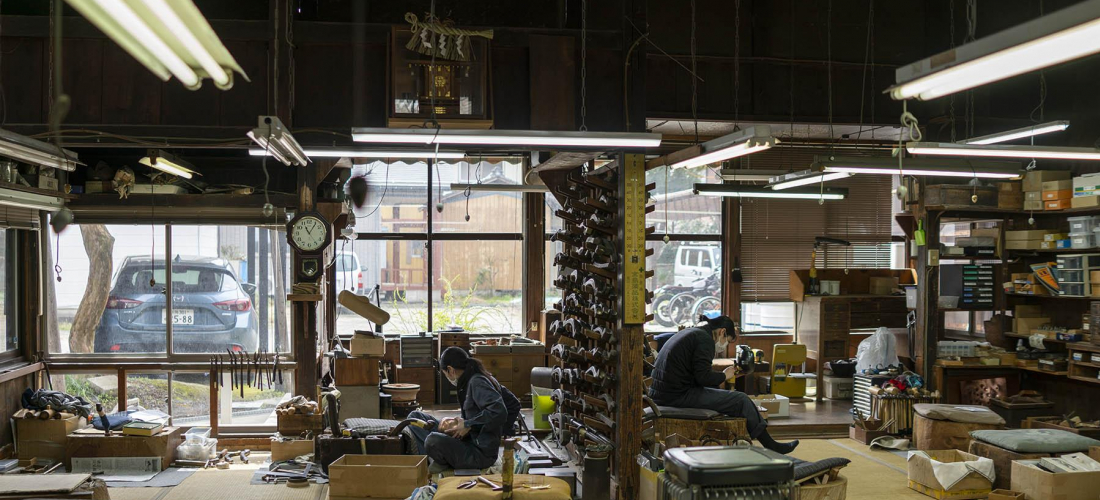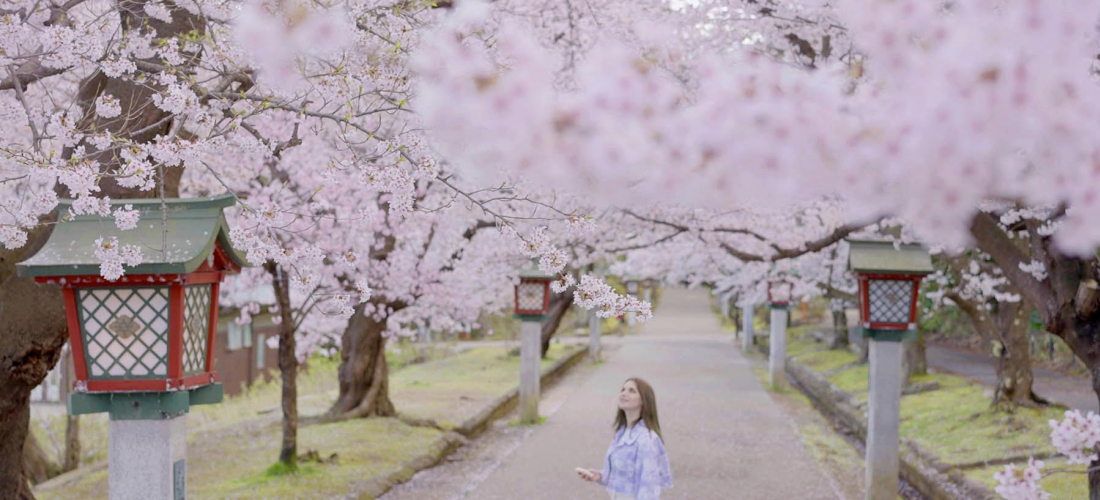
CONTENTS
Join Japankuru on a trip to this lesser-known JR EAST shinkansen station, where springtime brings warm weather and pink cherry blossoms. Find out more about the best local spots recommended by the JR EAST staff themselves!
Tsubame & Sanjo: Where Spring Bursts Into Bloom
Is the fresh spring air of Japan's countryside calling your name? Getting ready to check train schedules and cherry blossom forecasts? The area around Tsubamesanjō Station is full of artisan factories and awash with ancient legend, but these two cities are also blessed with four lovely seasons, from snowy winters to verdant green summers. So when spring rolls around, there's no better place to enjoy the beauty of Japan's cherry blossoms and feel the cool breeze coming off the Sea of Japan!
Getting to Tsubamesanjō Station
As a stop on the JR EAST Jōetsu Shinkansen (bullet train), access to Tsubamesanjō Station is extremely convenient for anyone starting in or around Tokyo! Tsubamesanjō Station is one of a dozen along the train line, which starts from Tokyo Station and stops at Ueno before heading into Niigata Prefecture, and finally arriving in the Tsubame-Sanjo area!
The trip is a little under two hours, which makes this an ideal destination for a weekend away, or a little excursion using a rail pass. The "JR EAST PASS (Nagano, Niigata area)" is especially convenient when heading to Tsubame-Sanjo: for 18,000 yen (tax included), the pass lets you ride all the JR EAST trains you want for five days, including shinkansen and limited express trains, and even some JR buses. From Tokyo to Tsubamesanjō Station, tickets with reserved seats normally cost a little under 19,000 yen round trip, but using the pass means you can freely travel all over Niigata and Nagano during your trip. You don't have to be a short-term traveler in Japan, either. Foreign residents can use the pass too!
JR East
"About JR EAST"
Official Website (en)
"Seat Reservation Service Online for Shinkansen and Limited Express Train in East Japan Region"
JR EAST Train Reservations (en)
Okozu Bunsui Sakura Park: Cherry Blossom Heaven Along the River
The two-city area of Tsubame-Sanjo hasn't yet built a reputation for cherry blossoms on a national level, but it's actually home to a cherry blossom viewing spot ranked in the country's top 100, making it a favorite for cherry blossom fans in the know! This hot 100 cherry blossom spot is Okozu Bunsui Sakura Park, known for its path lined with seemingly unending rows of cherry trees. The trees are spaced evenly along the road, so they create walls of pink petals, and even join overhead to create heavenly tunnels. Even during the peak of cherry blossom season, when the flowers are all abloom and a strong breeze will send petals fluttering past, the park tends to be uncrowded, and you'll mostly see locals who come to enjoy the weather or walk their dogs.
The park stretches over 10km along a road running parallel to the river, lined with more than 2,600 Yoshino cherry trees. Not only is it a nice place for a stroll or a hanami picnic, but it's also a great spot for a leisurely drive with the windows down, with flower petals floating in on the breeze.
Okozu Bunsui Sakura Park (大河津分水 桜並木)
4026 Gosengoku, Tsubame, Niigata
Bunsui Station: Stationside Cherry Blossoms, Noon and Night
Another major cherry blossom viewing destination in Tsubame is especially popular with railway lovers and fans of Japan Railways, because it's found at Bunsui Station! One of the platforms at this little local station is lined with tall cherry trees, and more cherry trees surround the train tracks beyond the platform, so the flowers are ready to greet each passing train as it comes in or out of the station during the spring.
When the trees are in full bloom, train fanatics and photography lovers alike will line up along the platform, aiming for the perfect photo spot and then waiting in anticipation until the next train arrives, so they can take pictures of the train cars in front of a pretty pink backdrop.
Bunsui Station (分水駅)
1-1 Bunsuisakuramachi, Tsubame, Niigata
The view from Bunsui Station's platform is lovely at any time of day, and many sightseers and photographers also gather after sunset, when the cherry trees are brightly lit from below. Once a year, the atmosphere becomes especially festive with the arrival of one train in particular, the JR Shu*Kura. The Shu*Kura is a special sightseeing train that only makes one stop in Bunsui each year, to take passengers on a fun ride past the beautiful cherry blossoms. Locals gather and make something of an event out of it, ringing musical "Cherry Bells" to welcome passengers getting off the train, and setting up food stalls outside the station. It's fun to join the festivities whether you're getting on the train or not!
Shu*Kura Train (シュクラ)
Official Website (en)
・Bonus!・ Yahiko Park + Panda Sweets
One extra cherry blossom recommendation in the area is Yahiko Park, not far from Yahiko Shrine! This park is mostly known for colorful autumn foliage, so we'd definitely recommend coming back again in the fall, but you certainly won't be disappointed if you visit in the spring! The lanterns add a little something special to this park path lined with cherry blossoms.
Next to the park, you can also grab yourself a bite to eat while you enjoy the flowers: a local snack that's won praise on a national level! The "panda-yaki" manju (パンダ焼き) at Bunsuido sweets shop are little steamed cakes made in the shape of a panda, and they have such a uniquely chewy texture that you might mistake them for mochi. Filling options for the little pandas include red bean, custard, or cream cheese, but the most popular filling of all is zunda (ズンダ), which is a sweet bean paste made with edamame! The surprising flavors and textures of this local treat won awards at Japan's "National Oyatsu Ranking Grand Prix" (a national competition for sweets and snacks) a few years back, so you know it's worth trying!
Bunsuido (分水堂菓子舗)
1041-1 Yahiko, Nishikambara District, Niigata
Official Facebook Page
A Region of Seasonal Delights
When the spring cherry blossom season starts to come to a close in cities like Tokyo, that means Japan's northern regions are just starting to look their best, so don't mourn the end of the year's cherry blossoms just yet! Visit Niigata Prefecture and get off at Tsubamesanjō Station for another dose of beautiful spring flowers and wonderful seaside weather, then come back again to see the green of summer, the red autumn leaves, and the white snow of a Niigata winter! The shinkansen is waiting to whisk you away!
▲ See the cities brought to life in our Tsubame-Sanjo video!
Tsubamesanjō Station Access
▶ JR EAST Jōetsu Shinkansen Line
・Under 2 hours from Tokyo to Tsubamesanjō Station.
▶ JR EAST Pass (Nagano, Niigata area) Recommended!
・5 days of JR EAST trains, including shinkansen and limited express trains, plus some JR buses for 18,000 yen (tax included).
・Available to foreign travelers and foreign residents.
▶ "About JR EAST"
Official Website (en)
▶ "Seat Reservation Service Online for Shinkansen and Limited Express Train in East Japan Region"
JR EAST Train Reservations (en)
For more info and updates from Japan, check Japankuru for new articles, and don't forget to follow us on twitter, instagram, and facebook!
Details
NAME:Tsubame-Sanjo Area
ACCESS:Tsubamesanjō Station (燕三条駅)
COMMENT
FEATURED MEDIA
VIEW MORE 
A New Tokyo Animal Destination: Relax & Learn About the World’s Animals in Japan
#pr #japankuru #anitouch #anitouchtokyodome #capybara #capybaracafe #animalcafe #tokyotrip #japantrip #카피바라 #애니터치 #아이와가볼만한곳 #도쿄여행 #가족여행 #東京旅遊 #東京親子景點 #日本動物互動體驗 #水豚泡澡 #東京巨蛋城 #เที่ยวญี่ปุ่น2025 #ที่เที่ยวครอบครัว #สวนสัตว์ในร่ม #TokyoDomeCity #anitouchtokyodome

Shohei Ohtani Collab Developed Products & Other Japanese Drugstore Recommendations From Kowa
#pr #japankuru
#kowa #syncronkowa #japanshopping #preworkout #postworkout #tokyoshopping #japantrip #일본쇼핑 #일본이온음료 #오타니 #오타니쇼헤이 #코와 #興和 #日本必買 #日本旅遊 #運動補充能量 #運動飲品 #ช้อปปิ้งญี่ปุ่น #เครื่องดื่มออกกำลังกาย #นักกีฬา #ผลิตภัณฑ์ญี่ปุ่น #อาหารเสริมญี่ปุ่น

도쿄 근교 당일치기 여행 추천! 작은 에도라 불리는 ‘가와고에’
세이부 ‘가와고에 패스(디지털)’ 하나면 편리하게 이동 + 가성비까지 완벽하게! 필름카메라 감성 가득한 레트로 거리 길거리 먹방부터 귀여움 끝판왕 핫플&포토 스폿까지 총집합!
Looking for day trips from Tokyo? Try Kawagoe, AKA Little Edo!
Use the SEIBU KAWAGOE PASS (Digital) for easy, affordable transportation!
Check out the historic streets of Kawagoe for some great street food and plenty of picturesque retro photo ops.
#pr #japankuru #도쿄근교여행 #가와고에 #가와고에패스 #세이부패스 #기모노체험 #가와고에여행 #도쿄여행코스 #도쿄근교당일치기 #세이부가와고에패스
#tokyotrip #kawagoe #tokyodaytrip #seibukawagoepass #kimono #japantrip

Hirakata Park, Osaka: Enjoy the Classic Japanese Theme Park Experience!
#pr #japankuru #hirakatapark #amusementpark #japantrip #osakatrip #familytrip #rollercoaster #retrôvibes #枚方公園 #大阪旅遊 #關西私房景點 #日本親子旅行 #日本遊樂園 #木造雲霄飛車 #히라카타파크 #สวนสนุกฮิราคาตะพาร์ค

🍵Love Matcha? Upgrade Your Matcha Experience With Tsujiri!
・160년 전통 일본 말차 브랜드 츠지리에서 말차 덕후들이 픽한 인기템만 골라봤어요
・抹茶控的天堂!甜點、餅乾、飲品一次滿足,連伴手禮都幫你列好清單了
・ส่องมัทฉะสุดฮิต พร้อมพาเที่ยวร้านดังในอุจิ เกียวโต
#pr #japankuru #matcha #matchalover #uji #kyoto #japantrip #ujimatcha #matchalatte #matchasweets #tsujiri #말차 #말차덕후 #츠지리 #교토여행 #말차라떼 #辻利抹茶 #抹茶控 #日本抹茶 #宇治 #宇治抹茶 #日本伴手禮 #抹茶拿鐵 #抹茶甜點 #มัทฉะ #ของฝากญี่ปุ่น #ชาเขียวญี่ปุ่น #ซึจิริ #เกียวโต

・What Is Nenaito? And How Does This Sleep Care Supplement Work?
・你的睡眠保健品——認識「睡眠茶氨酸錠」
・수면 케어 서플리먼트 ‘네나이토’란?
・ผลิตภัณฑ์เสริมอาหารดูแลการนอน “Nenaito(ネナイト)” คืออะไร?
#pr #japankuru #sleepcare #japanshopping #nenaito #sleepsupplement #asahi #睡眠茶氨酸錠 #睡眠保健 #朝日 #l茶胺酸 #日本藥妝 #日本必買 #일본쇼핑 #수면 #건강하자 #네나이토 #일본영양제 #อาหารเสริมญี่ปุ่น #ช้อปปิ้งญี่ปุ่น #ร้านขายยาญี่ปุ่น #ดูแลตัวเองก่อนนอน #อาซาฮิ

Japanese Drugstore Must-Buys! Essential Items from Hisamitsu® Pharmaceutical
#PR #japankuru #hisamitsu #salonpas #feitas #hisamitsupharmaceutical #japanshopping #tokyoshopping #traveltips #japanhaul #japantrip #japantravel

Whether you grew up with Dragon Ball or you just fell in love with Dragon Ball DAIMA, you'll like the newest JINS collab. Shop this limited-edition Dragon Ball accessory collection to find some of the best Dragon Ball merchandise in Japan!
>> Find out more at Japankuru.com! (link in bio)
#japankuru #dragonball #dragonballdaima #animecollab #japanshopping #jins #japaneseglasses #japantravel #animemerch #pr

This month, Japankuru teamed up with @official_korekoko to invite three influencers (originally from Thailand, China, and Taiwan) on a trip to Yokohama. Check out the article (in Chinese) on Japankuru.com for all of their travel tips and photography hints - and look forward to more cool collaborations coming soon!
【橫濱夜散策 x 教你怎麼拍出網美照 📸✨】
每次來日本玩,是不是都會先找旅日網紅的推薦清單?
這次,我們邀請擁有日本豐富旅遊經驗的🇹🇭泰國、🇨🇳中國、🇹🇼台灣網紅,帶你走進夜晚的橫濱!從玩樂路線到拍照技巧,教你怎麼拍出最美的夜景照。那些熟悉的景點,換個視角說不定會有新發現~快跟他們一起出發吧!
#japankuru #橫濱紅磚倉庫 #汽車道 #中華街 #yokohama #japankuru #橫濱紅磚倉庫 #汽車道 #中華街 #yokohama #yokohamaredbrickwarehouse #yokohamachinatown

If you’re a fan of Vivienne Westwood's Japanese designs, and you’re looking forward to shopping in Harajuku this summer, we’ve got important news for you. Vivienne Westwood RED LABEL Laforet Harajuku is now closed for renovations - but the grand reopening is scheduled for July!
>> Find out more at Japankuru.com! (link in bio)
#japankuru #viviennewestwood #harajuku #omotesando #viviennewestwoodredlabel #viviennewestwoodjapan #비비안웨스트우드 #오모테산도 #하라주쿠 #日本購物 #薇薇安魏斯伍德 #日本時尚 #原宿 #表參道 #japantrip #japanshopping #pr

Ready to see TeamLab in Kyoto!? At TeamLab Biovortex Kyoto, the collective is taking their acclaimed immersive art and bringing it to Japan's ancient capital. We can't wait to see it for ourselves this autumn!
>> Find out more at Japankuru.com! (link in bio)
#japankuru #teamlab #teamlabbiovortex #kyoto #kyototrip #japantravel #artnews
Photos courtesy of teamLab, Exhibition view of teamLab Biovortex Kyoto, 2025, Kyoto ® teamLab, courtesy Pace Gallery

Japanese Makeup Shopping • A Trip to Kamakura & Enoshima With Canmake’s Cool-Toned Summer Makeup
#pr #canmake #enoshima #enoden #에노시마 #캔메이크 #japanesemakeup #japanesecosmetics

⚔️The Robot Restaurant is gone, but the Samurai Restaurant is here to take its place. Check it out, and don't forget your coupon!
🍣신주쿠의 명소 로봇 레스토랑이 사무라이 레스토랑으로 부활! 절찬 쿠폰 발급중
💃18歲以上才能入場的歌舞秀,和你想的不一樣!拿好優惠券去看看~
#tokyo #shinjuku #samurairestaurant #robotrestaurant #tokyotrip #도쿄여행 #신주쿠 #사무라이레스토랑 #이색체험 #할인이벤트 #歌舞伎町 #東京景點 #武士餐廳 #日本表演 #日本文化體驗 #japankuru #japantrip #japantravel #japanlovers #japan_of_insta

Japanese appliance & electronics shopping with our KOJIMA x BicCamera coupon!
用JAPANKURU的KOJIMA x BicCamera優惠券買這些正好❤️
코지마 x 빅 카메라 쿠폰으로 일본 가전 제품 쇼핑하기
#pr #japankuru #japanshopping #kojima #biccamera #japaneseskincare #yaman #dji #osmopocket3 #skincaredevice #日本購物 #美容儀 #相機 #雅萌 #日本家電 #일본여행 #면세 #여행꿀팁 #일본쇼핑리스트 #쿠폰 #일본쇼핑 #일본브랜드 #할인 #코지마 #빅카메라 #japankurucoupon

